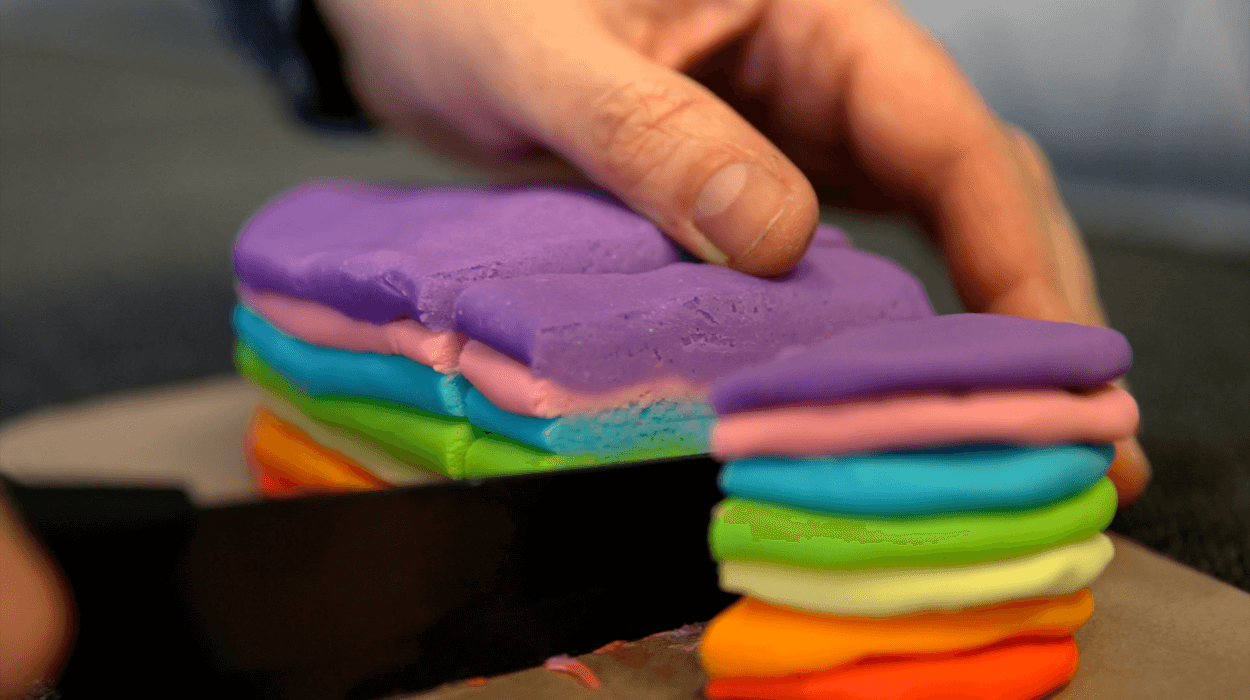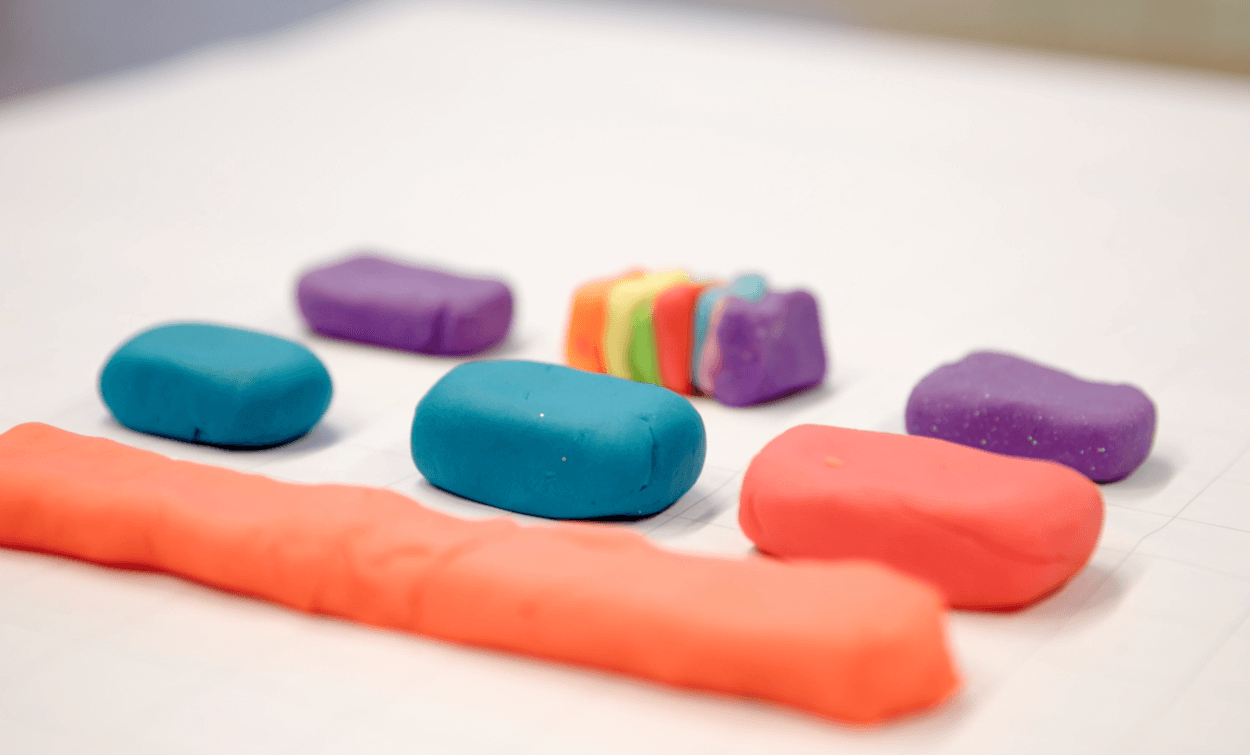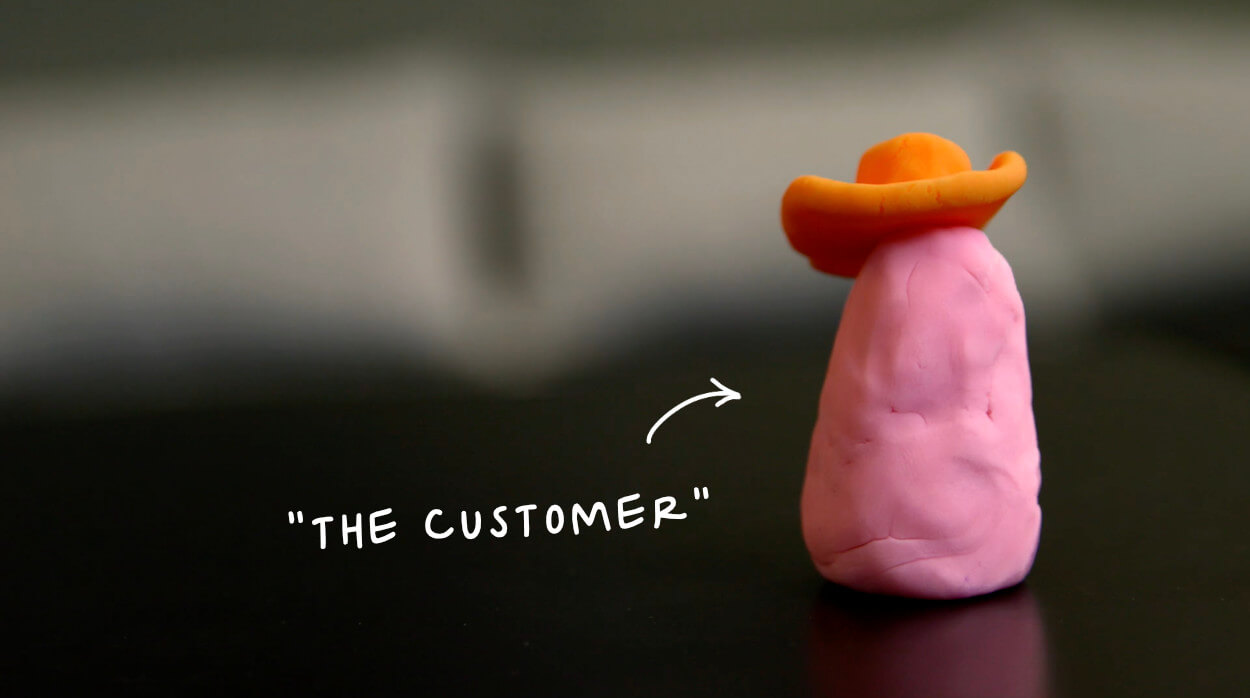3 Creative Ideas for Using Play-Doh in Your Online Courses
What I love most about creating online courses is the process of finding new creative ways to illustrate your point.
Not only does this make online courses more fun and engaging, it also makes it easier for course participants to remember whatever it is you’re trying to teach.
One way to enrich your course content is by using Play-Doh: a soft, squeezable type of clay made for children 🧒🧒
I had never even thought of Play-Doh as an option, until Boris – a trainer and coach I collaborated with recently – proposed it to me for a recent project. I guess it helps that he has younger children. The course we were making, however, was intended for highly educated professionals. Not kids.
In this article, I’ll share 3 ideas we came up with to use Play-Doh in our online course.

Idea #1: Layered cake as a product 🍰
The first thing we did was to mould seven colours of Play-Doh into a layered cake.
The entire cake represents the product of a company and each layer represents a part of that product. If the product is an iPhone app, for example, then one layer could be the app’s graphic design, another layer could be its user interface, yet another could be its reward system et cetera.
The nice thing about a cake, however, is that you can slice it. This allows for nice ways to visualise parts of a larger whole or even percentages.
We used it to show that an early version of your product – a slide of Play-Doh cake – doesn’t need to include all desired functionality. It just needs to include enough of all different functionalities to be able to test it.

Idea #2: Cuboids as teams 🟦 🟪
In a similar way to cake, you can use Play-Doh to illustrate teams. In our case, we used it to illustrate a team of teams.
What’s cool about this way of visualising is that we could clearly show two things:
🐘 Team size
🏳️🌈 Team diversity
Larger teams are simply a larger piece of clay and each colour represents a different expertise or skill. So, as you can see in our example, most teams are mono-skilled while one team includes many different skills.

Idea #3: Hats on cylindrical shapes as people 🤠
Finally, we used Play-Doh to illustrate ‘the customer’. It also kind of looks like Barbapapa 😅
While representing a large group of people, it was really nice to visualise the customer as one person because one of the main goals of our course is to increase customer-centric thinking among employees.
With three simple pieces of Doh we were able to give our customer a little hat and body… and just like that you have a great visual prop to use in your online course.
The potential for using different hats and different colours to illustrate different groups of people is huge. Even just using the same hat with a different colour every time could already give enough of a distinction.
What are your ideas? 🌈
Now that you know how I used Play-Doh in my online courses, I’m curious whether you can come up with your own ideas as well.
One tip though: keep it simple.
Part of the reason why I love using Play-Doh is because it allows us to improvise and reshape quickly. Also, the prettier we tried to make our creations, the worse they started to look. So early on in our creation process, we opted for an extremely simple look which actually works great on camera.
Oh and what I also love is that Play-Doh inspired us to have some extra fun on set, as you can see in this video:
I like to add this kind of video at the end of a module to create a short celebrational moment and a sense of achievement for our course participants. Because I believe that if you have fun, so will your students!
If you’ve used Play-Doh or similar props in your courses or video content, let me know below in the comments. For now, have fun creating!

0 Comments